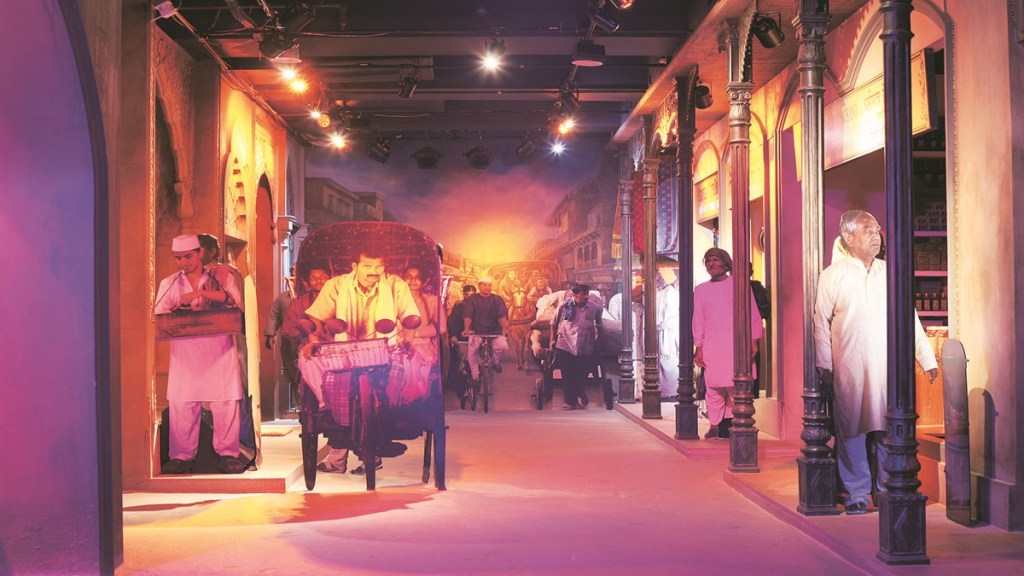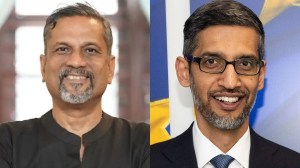On the 47th Museum Day on May 18 this year, PM Narendra Modi launched a virtual walkthrough of the upcoming Yuge Yugeen Bharat National Museum at the iconic North and South blocks of the national capital that will have multiple thematic segments telling the story of India spanning over 5,000 years. On the same day, the Partition Museum in Delhi, the second such museum after Amritsar to commemorate the largest migration in history, opened its doors to the public.
In August, people will also witness the second edition of Bihar Museum Biennale that aims to sensitise people about the importance of museum culture in India. Organised by the Bihar government, the biennale will host museums from Thailand, Austria, Nepal and Costa Rica, among other nations. The biennale will feature exhibitions, virtual tours, art shows and immersive experiences based on the theme of ‘Connecting People, Connecting Cultures, Interrogating Museums’.
Also read: Sip and Save: 10 Budget-friendly wines to explore in India
In October, the National Museum of Women in the Arts (NMWA) in Washington, DC will reopen after a two-year, top-to-bottom building renovation and hold a dramatic inaugural exhibition to highlight the new space. ‘The Sky’s the Limit’, featuring contemporary sculpture and immersive installations by 13 international and US-based artists, is a rare survey of large-scale work by women from the past two decades and will be on view through February 2024. The NMWA is the first museum in the world solely dedicated to championing women through the arts.
Museums have always been repositories of the rich heritage that connect the past with the present and build a future through cultural exchange and community building. They care for and display artifacts and other objects of artistic, cultural, historical or scientific importance and make them available for public viewing. However, during the Covid pandemic, not knowing when or if they could welcome back visitors, museums shifted their creativity to find innovative ways to engage with the audience.
Cut to the present. A visit to the museum seems to have evolved beyond mere online experiences. Museums are now using cutting-edge technology to breathe new life into the history and geography of cities, cultures and structures. From 360-degree panoramic technology to improved user experience, museums have become a cultural hub for interactivity, especially for youngsters to enhance their understanding of cultural heritage.
Digital journey
Institutions and museums associated with art, history and culture around the world are compelled to rethink, reinvent and revive their practices and strategies on reaching out to viewers. As the future of museums is hybrid, focused on both the physical and digital aspect of the institution, there is also the need to make this form of art engaging, educational, entertaining, relevant and fun. That’s where the Museum of Art & Photography (MAP) comes into the picture. The private art museum based in Bengaluru is offering interactive screens installed throughout the galleries on the collection on display. Opened in February this year, MAP has introduced a range of art-centric activities in digital avatar, making art inclusive.
Also read: Dry, itchy, infuriating scalp? Here’s how you can fix it!
“The museum features the artificial intelligence (AI) persona of the late artist MF Husain, in collaboration with Accenture Labs. The digital persona is created to engage in realistic conversations with visitors, combining AI with a human-centred design. The AI was created using techniques including face superimposition and speech synthesis. One can ask Husain’s digital twin a question related to his early life, family or career to receive a simulated response from him. A 3D hologram at the museum’s physical space will also come soon,” shares Abhishek Poddar, founder and trustee, MAP.
Museums have been collection-led and curator-based showcases of archival material and objects with almost a scholarly display wherein the visitor is required to engage and decipher objects in isolation from their context. Today, this paradigm is undergoing a change. Modern times and their economics demand that the museums become visitor-oriented, to the point of becoming dynamic, so that they can attract a huge footfall—an aspect that has become increasingly achievable with rapidly evolving technology.
Virasat-e-Khalsa (V-e-K) in Anandpur Sahib, Punjab, is perhaps one of the early examples of this shift where the narrative holds prime importance. The museum has created an effect of wonder through the digital. “There are really no art objects in the museums. It is completely experiential, where there is sound, visuals and a sensorial drama of what insightful curation can do when judiciously combined with design and technical know-how,” says Alka Pande, art historian, curator of Visual Arts Gallery, India Habitat Centre, New Delhi, and project director of Bihar Museum Biennale, Patna.
How does it work? The technology and digital devices become one with the story. A script of this narrative is threaded through the exhibits to create high and low points in the emotional graphs—creating a flow between immersive experiences and points of rest/reflection. “We see the future of the museums to be entirely centred around the visitor. With the use of technology, the experience of each participant is customised to create his or her own version of each of the exhibits. The visitor may absorb, save and interact with the information at their own pace and create a journey,” says Amardeep Behl, founder of Design Habit, a design-led company creating immersive experiences, compiling storyboards, drawing plans and sketching out audio-visual and technical content of projects like Virasat-e-Khalsa in Punjab, The Journey by DS Group in Noida, and Darshan Museum in Pune, to name a few.
But unlike traditional museums that dive into the past, new-age museums promise to take visitors on a new journey. So, does this mean we need to revamp Indian museums in the tech-digital age? “Despite our nation’s artistic heritage being one of the richest in the world, Indian museums until now have not been able to reach their potential of sharing their collections seamlessly and innovatively with audiences. While you see hundreds of Indians lining up outside the Musee Du Louvre to see the Mona Lisa, or the Islamic collection at the MET, New York, visitation to museums still remains bleak in India. A revamp of our current museums and the setting up of exciting and engaging experiences in museums are key to keep our community flourishing. Going digital should definitely be the future of India’s museum community. However, the aim should be to attract local audiences, young and old, so they see merit in visiting the physical museum,” adds Poddar of MAP.
While the digital world will play an incremental role in the future of museums, the physical spaces will also shine through with newer, innovative and interactive tools and technologies in place. For instance, Pradhan Mantri Sangrahalaya in New Delhi allows visitors to experience art in a seamless and holistic manner. A futuristic, transformative, high-tech, multigenerational experience in identity, innovation and participation, which was inaugurated by PM Narendra Modi this year, is dedicated to all the past prime ministers of India. It presents artifacts, history through visuals as well as holograms, virtual reality, augmented reality, multi-touch, multimedia, kiosks, computerised kinetic sculptures, smartphone applications, interactive screens and experiential installations.
Likewise, Dubai’s Museum of the Future is a first-of-its-kind sensorial experience in architecture. It’s a seven-storey, pillarless and torus-shaped museum that has been dubbed as the ‘world’s most beautiful building’. It has become one of Dubai’s definitive design marvels and aims to inspire the world to imagine the possibilities of tomorrow, featuring mesmerising installations and futuristic experiences.
The museum rises 77 metres above the ground, powered with 4,000 megawatts of solar energy. The pillarless structure is home to seven unique floors and employs the latest technologies of virtual and augmented reality, data analysis, AI and human-machine interaction.
Space technology and the inspiring Emirates Mars Mission project that saw the Hope Probe successfully enter Mars’ orbit last year is one such exhibit in the museum that compliments a crowning milestone for the UAE.
“The immersive experience lets visitors in a new environment as they are re-introduced to the planet, the future of healing, sustainability and bioengineering technology,” says Khalfan Belhoul, CEO of Dubai Future Foundation and a key member of the Museum of the Future’s overall project.
Unlike traditional museums which rely on the visitors to piece together an image of the time and context around the objects on display, objects are nowadays placed in recreated spaces and speak volumes through imagery; ensuring greater delight and retention for visitors of all ages and backgrounds. One such project titled ‘The Journey’ by Design Habit for the DS Group in Noida captures this approach. Objects of importance to the story are placed into the context of 20th century recreations of Chandni Chowk in Delhi and the founding members of the company are brought to life through the use of holographic images and films to narrate the story in their own words. A dedicated and trained force of engineers, animators or 3D designers work tirelessly behind the scenes to make these experiences successful and seamless.
Tech done right
Technology has taken over the mummified version of the traditional one-way viewing of artifacts in museums. The transformation is visible with new technologies like AR and VR cleverly intertwined with the display of artifacts. It is one of the best tools to communicate stories and museums are now designed to do just that.
“New-age museums that incorporate technology offer an ‘interactive’ way to learn about history. Normally, the 15-35 years’ age group would hate to go to museums but the way technology tells stories or history can help. The takeaways are important for the tech-savvy generation as the attention span is less and the stress is on the ‘wow’ and ‘awe’ factor,” says museum expert Vinod Daniel, who is also the chairman of the board for AusHeritage and board member of the International Council of Museums.
Institutions like the Partition Museum Delhi and Bihar Museum Biennale at the Bihar Museum in Patna are showcasing the richness and treasures of India in a hybrid format. While the biennale will be a transformative experience on understanding of Indian culture, the Partition Museum in Delhi has created memorabilia and stories about experiencing the horrors of Partition. It has an immersive VR experience by Project Dastaan called Child of Empire, which gives an experience of the partition from the perspective of two individuals who migrated from Pakistan to India, and the opposite journey.
“If the museum lends a narrative with integration of technology, it becomes exciting for viewers and makes the subject matter more interactive,” says Kishwar Desai, chairperson of The Arts & Cultural Heritage Trust who has set up the Partition Museums in Amritsar and Delhi. “It is an oral history and participative museum using 3D technology on people’s memories of the Partition. We have actual objects donated by the Partition survivors,” she adds.
When a visitor can participate in the museum and not be a mute spectator moving from one gallery to another, it makes the whole process quite different. “To be able to click pictures with your favourite PM or get a letter from him/ her opens a whole new world for the present generation. Museums can establish a live connection with otherwise lifeless objects in museums. If this is done, museums will become live-wire institutions,” Vinay Sahasrabuddhe, a former Rajya Sabha MP, member of the executive committee of Nehru Memorial Museum and Library and president of the Indian Council for Cultural Relations, earlier told FE.
That’s what museums like the Louvre in Paris, The Tate Modern in London and The Smithsonian in Washington have become, by organising exhibitions with VR elements. Last year, visitors to the Smithsonian’s Arts and Industries Building in Washington DC saw ‘Futures x Meta: Moonwalk’, an exhibit which made the visitor don a Meta Quest 2 VR headset and experience the 1969 Apollo 11 mission that sent Neil Armstrong and company to the moon, in the Eagle spacecraft, and walk on the moon’s surface.
Meanwhile, Google Arts & Culture, a non-commercial initiative to put stories, cultural institutions and artists around the world on one platform, is preserving and bringing the world’s art and culture online so that it’s accessible to anyone, anywhere. For instance, it has collaborated with the National Museum in New Delhi for a project called ‘Life in Miniature’ through which people can view several hundred miniature paintings online in never before seen ways and in extraordinary detail.
More in the offing
The Union ministry of culture is now planning to introduce cultural experiences via museums and build over 100 experiential museums including the Vadnagar Buddhist site in Gujarat.
The Vadnagar museum, for instance, when ready, would showcase the development of the ancient town spanning 2,500 years along with a first-hand experience of a walkway through the excavated site.
The museum will set the narrative of uninterrupted history of human settlement at Vadnagar and display significant objects of antiquity with over 40,000 artifacts acquired during excavations. Immersive technology such as AR/VR, 3D displays, installations, replicas and dioramas will be used for the project.
The ministry has also developed seven museums including 1857-India’s First War of Independence; Netaji Subhash Chandra Bose and INA; Azadi-ke-Diwane; Yaad-e-Jallian (all in Red Fort, Delhi); Virtual Experiential Museum (Man Mahal), Varanasi; Mahatma Gandhi Museum (Aga Khan palace) Pune; and Gallery of Confiscated and Retrieved Antiquities (Purana Qila), Delhi.







